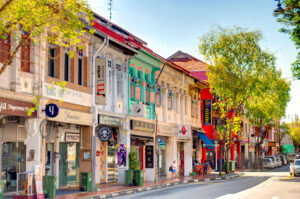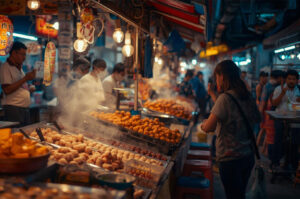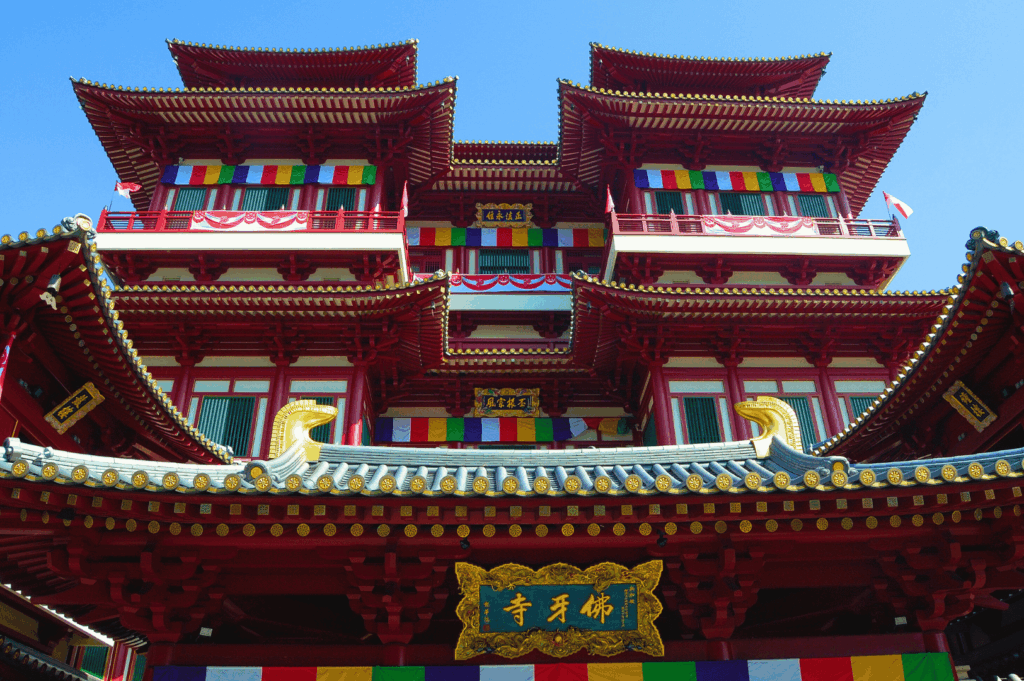
Step into the heart of Singapore Chinatown and you enter a vibrant world where stories of the past blend seamlessly with the energy of the present. Famed for its rich history and bustling streets, Chinatown Singapore is where the scent of burning incense from centuries-old temples mingles with aromas drifting from artisanal coffee bars, hawker stalls, and rooftop bars. This iconic neighbourhood is a symbol of Singapore’s ongoing commitment to preserving cultural heritage—right down to its restored heritage buildings, traditional trades, and legendary food stalls along bustling markets.
A stroll through Singapore Chinatown is more than a sightseeing trip—it’s a full immersion into the nation’s evolving story. You can visit the renowned Chinatown Heritage Centre to learn about the lives of early Chinese immigrants and their journey down the Singapore River, before stepping out onto charming streets like Pagoda Street or Smith Street. Here, vibrant hawker centres and trendy cafes coexist, and the echoes of old Singapore linger amidst innovative dining concepts and buzzing nightlife. In every corner, Chinatown Singapore expresses an intersection of cultural preservation, local culture, and modern dynamism.
Singapore Chinatown: Historical Foundations
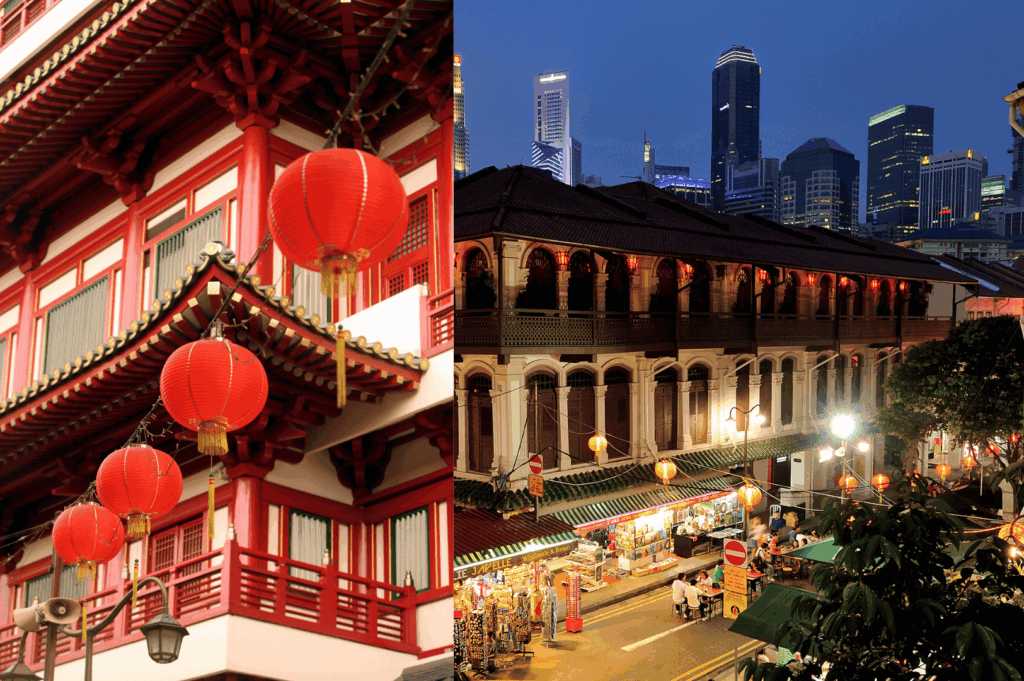
The origins of Singapore Chinatown go back to 1822, when Sir Stamford Raffles designated the bustling area south of the Singapore River—now famed for Pagoda Street—for the island’s growing Chinese community. This area, called Niu Che Shui (Bullock Cart Water), became a vibrant enclave for early Chinese immigrants. These settlers not only laid the groundwork for the area’s rich history and Chinese culture but also contributed to Singapore’s growth as a port city in Southeast Asia.
Pagoda Street and neighbouring Temple Street quickly became integral to Chinatown’s heritage, home to clan associations, wet markets, street markets, colorful shophouses, and a tapestry of traditional trades. Across decades, waves of Chinese migration infused the neighbourhood with unique traditions, dialects, and cuisines. Conservation efforts in the 1980s preserved these classic heritage buildings, ensuring Chinatown’s rich history and old world charm remain a defining feature of the iconic neighbourhood.Chinatown Heritage Centre and Cultural Landmarks
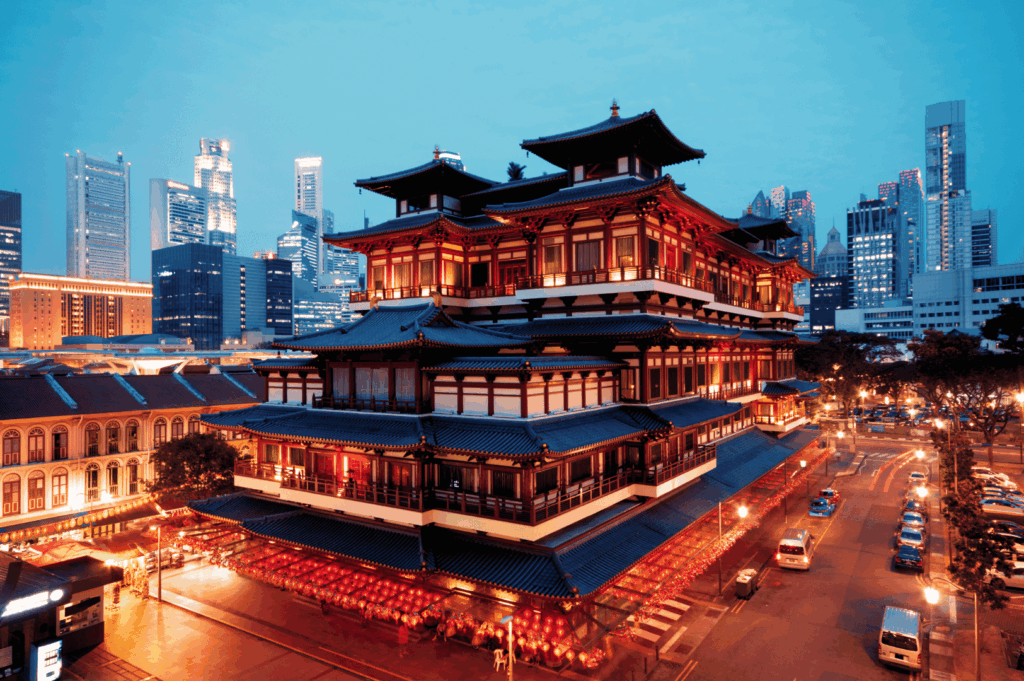
Chinatown Heritage Centre
When exploring Chinatown Singapore, the Chinatown Heritage Centre on Pagoda Street is a must-visit, recreating life as it was for early Chinese immigrants. Interactive exhibits bring to light Chinatown’s heritage, traditional trades, and the evolution of this vibrant district, making it one of the most important heritage centres in Singapore.Buddha Tooth Relic Temple
Another jewel of Singapore Chinatown, the Buddha Tooth Relic Temple stands as a landmark of Chinese Buddhist culture and Chinatown’s rich history. Located on South Bridge Road, the temple’s Tang Dynasty-inspired architecture and stunning Buddhist artifacts offer an immersive experience. Don’t miss the rooftop garden or weekend performances—just a short walk from other major attractions.Sri Mariamman Temple: Singapore’s Oldest Hindu Temple
The Sri Mariamman Temple, Singapore’s oldest Hindu temple, rises spectacularly on South Bridge Road. As a multicultural highlight, it’s a testament to the ethnic diversity and religious harmony of Chinatown Singapore, sitting close to Thian Hock Keng Temple and surrounded by bustling streets and night markets.Thian Hock Keng Temple & Heritage Buildings
Historic Thian Hock Keng Temple, one of the city’s oldest Hokkien temples, rests on Telok Ayer Street. Explore this site to admire its nail-free design, intricate tilework, and importance to early Chinese immigrants. The temple, along with surrounding colorful shophouses and traditional markets, forms the backbone of Chinatown’s architectural and cultural landmarks.Culinary Heritage: Chinatown Complex, Food Centres, and Traditional Fare
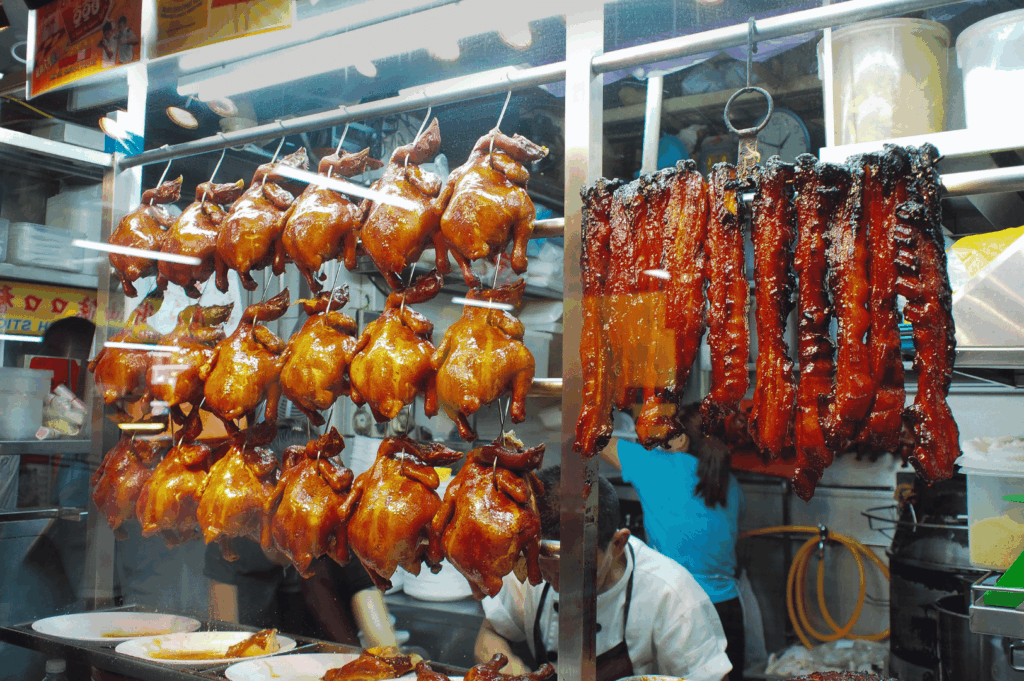
Chinatown Complex and Beyond
At the heart of this food centre-filled neighbourhood is Chinatown Complex, Singapore’s largest hawker centre. Home to over 260 hawker stalls, it’s famous for beloved dishes like hainanese chicken rice, char kway teow, dim sum, and other local delicacies—making it an essential stop on any food-focused Chinatown walking tour.
Maxwell Food Centre
Located near the Buddha Tooth Relic Temple, Maxwell Food Centre is celebrated for legendary chicken rice and its bustling atmosphere. Food stalls here serve deeply traditional fare, from steaming plates of rice to aromatic noodle soups, drawing crowds from all over the city, day and night.
Chinatown Food Street, Smith Street & More
The lively Chinatown Food Street and Smith Street transform nightly into havens for street food lovers. Here, food stalls specialize in satay, grilled seafood, old-school dim sum, and festive favorites—especially during the Chinese New Year season and Mid Autumn Festival celebrations.
Heritage Restaurants & Markets
Beyond renowned hawker centres, explore Temple Street, Trengganu Street, and vibrant markets for heritage sites like Kok Sen Restaurant, teahouses, and stalls selling classics like rice dumplings and mooncakes. For a taste of old Singapore, visit traditional trades on Ann Siang Hill, sip tea at a local teahouse, or catch a glimpse of daily life at a bustling wet market.
Modern Chinatown Singapore: A Contemporary Renaissance
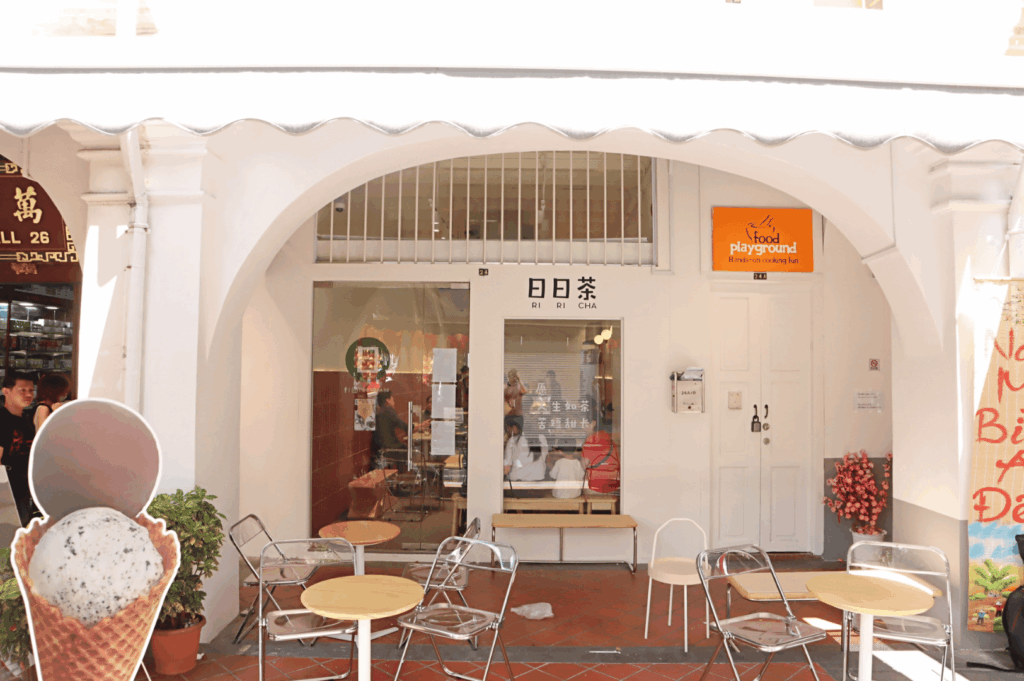
Trendy Cafes, Rooftop Bars, and Innovation
Modern Chinatown Singapore thrives with creative energy. Sip a cocktail at Potato Head Singapore on Keong Saik Road, visit an Insta-famous rooftop bar, or browse boutiques on Club Street that blend new concepts into historic shophouses. The district’s nightlife and modern dining scene stand alongside the best in the city, rejuvenating its old world charm with fresh life.
Street Art & Hidden Gems
Chinatown’s transformation is visible in its vibrant street art and curated murals along alleys and corridors. These hidden gems—paired with art galleries and new creative spaces—showcase both established and upcoming talents in Singapore’s cultural district.
Chinatown Street Market, Night Markets, and Hawker Stalls
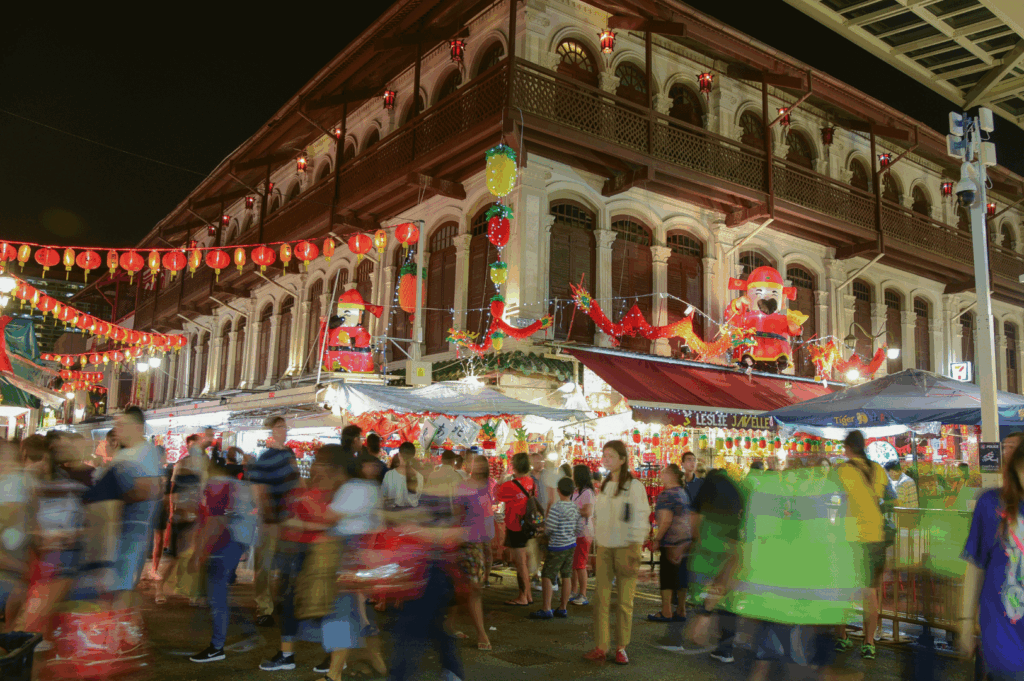
No visit to this bustling streetscape is complete without wandering the Chinatown Street Market and night markets. Here, trinkets, antiques, textiles, and snacks transport you back to old Singapore, while hawker stalls tempt you at every turn. During festivals, markets pulse with excitement as the area celebrates with local flair—especially vivid during the Chinese New Year season.
Club Street, Ann Siang Hill, & Chinatown’s Modern Hotspots
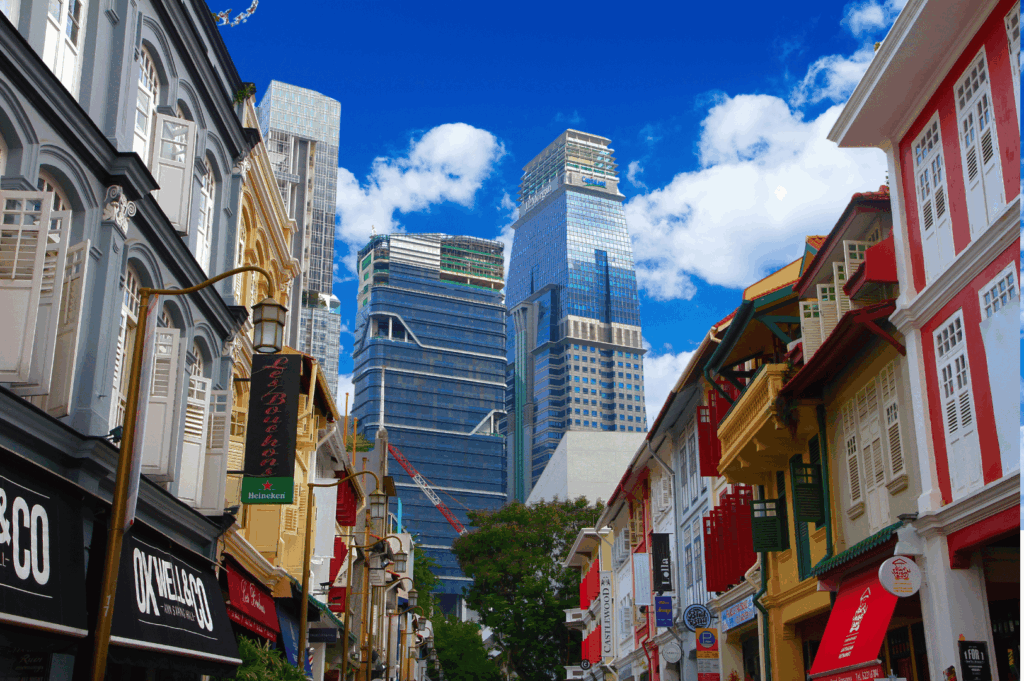
Take your self guided walking tour along Club Street, through Ann Siang Hill, and around People’s Park Complex. These locations are known for cutting-edge bars, international cuisine, and unique venues set against heritage buildings. This part of Chinatown is where locals and visitors alike mingle for after-work drinks, creative bites, and cultural performances, linking old and new in one of the city’s most vibrant nightlife hubs.
Exploring Chinatown Singapore: Practical Visitor’s Guide
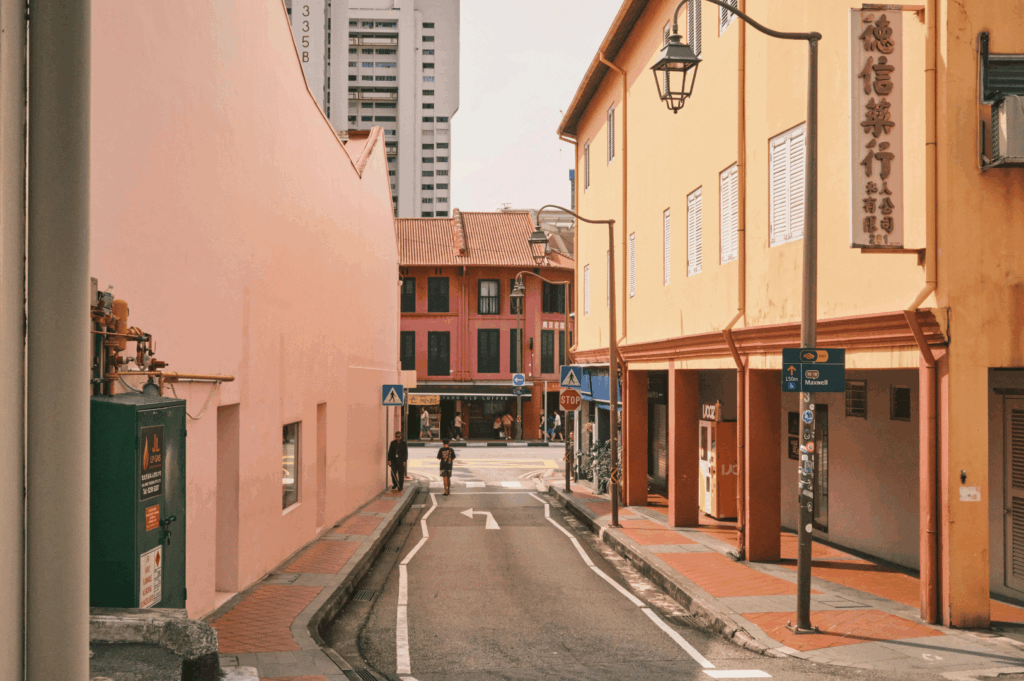
- Start at Chinatown MRT Station: Located near key attractions—Pagoda Street, Trengganu Street, and the Chinatown Complex—this is the best starting point for your walk.
- Immerse in History: Begin at Telok Ayer Street with Thian Hock Keng Temple and Amoy Street Food Centre, then move through South Bridge Road’s heritage sites.
- Stroll to Food Centres: Include Maxwell Food Centre, Chinatown Food Street, and nearby Amoy Street Food Centre for classic bites.
- Visit a Heritage Centre: The Chinatown Heritage Centre and Chinese Heritage Centre are both hubs for those looking to understand the neighborhood’s deep roots.
- Relax in Parks & Quarters: Break at Hong Lim Park or explore Tanjong Pagar and Clarke Quay for riverside scenes and vibrant nightlife—just a short walk from Chinatown’s buzzing centre.
- Best Visiting Times: Mornings for traditional markets, evenings for night markets and food.
- How to Get There: Chinatown MRT Station, Clarke Quay, and Telok Ayer stations are close by and offer swift access.
- For Hidden Gems: Explore smaller streets and alleys, and don’t miss heritage buildings that blend old Singapore with the city’s forward-looking spirit.
Chinatown’s Heritage: Cultural Preservation, Local Colour, and Festivals
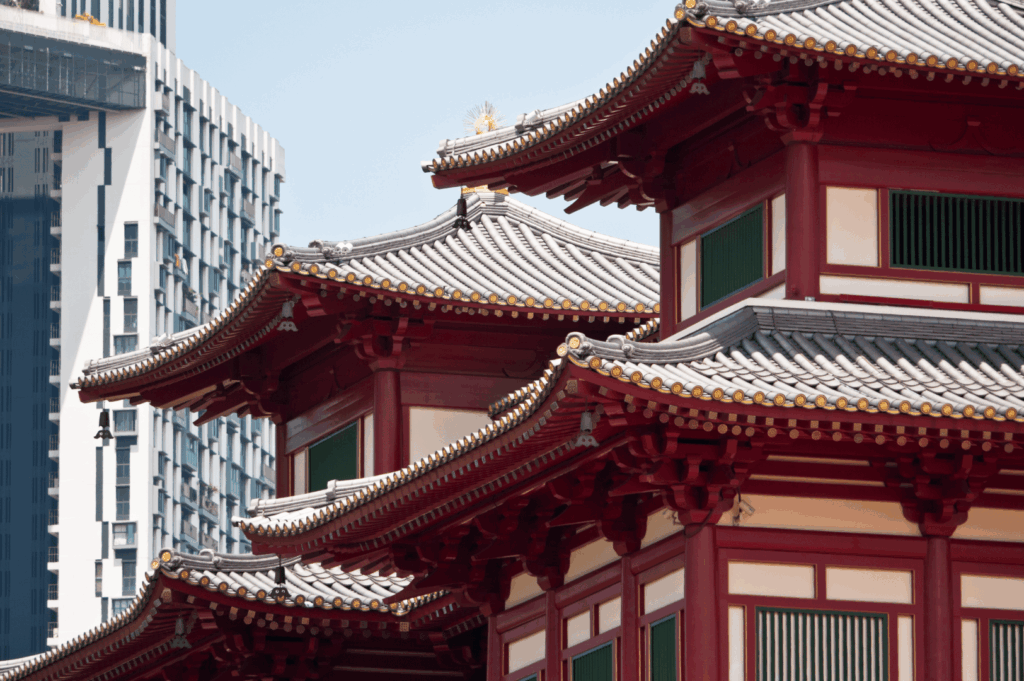
Ongoing efforts protect the unique charm of Singapore Chinatown, from cultural preservation initiatives and historical landmarks to seasonal events like the Mid Autumn Festival celebrations and Chinese New Year. Community projects keep traditional trades alive, and public art highlights Chinatown’s continuing evolution.
Whether you’re a fan of wet markets, night markets, local culture, or chinese culture, Chinatown’s heritage continues to shine—offering a window into the city’s past and a taste of its bold future.Conclusion
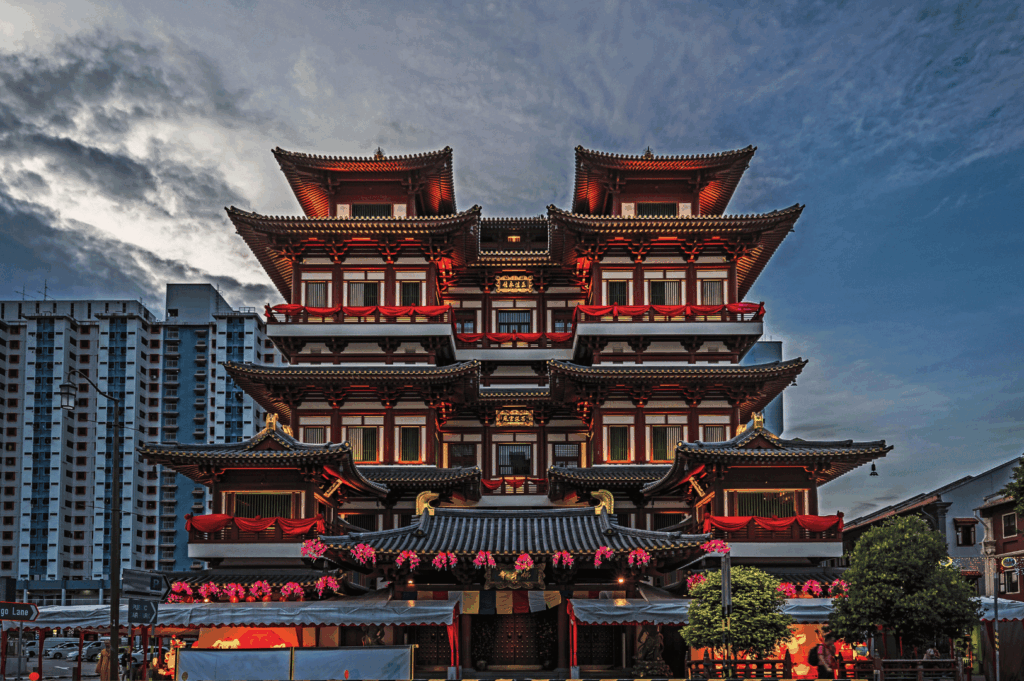
Singapore Chinatown is a place where every street tells a story and every meal is steeped in history. From vibrant markets and street food scenes to iconic temples, it’s an iconic neighbourhood that stands for both Chinatown’s heritage and Singapore’s commitment to progress. Whether you’re rediscovering the city or venturing here for the first time, a visit to this Chinatown offers a slice of tradition, innovation, and true local character.
Make your own discovery of Singapore Chinatown—with every walk, taste, and encounter, you’ll experience the enduring spirit and rich history that make it one of Southeast Asia’s most celebrated cultural quarters.
